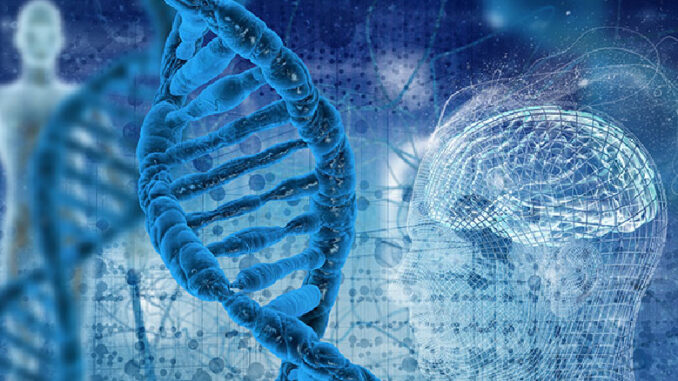
What is human-based research?
Human-based research encompasses a diverse array of innovative methodologies and biotechnologies, known as New Approach Methodologies (NAM), tailored specifically to human biology. These approaches utilize advanced knowledge of human biology to study diseases and develop safe and effective drugs, recognizing the importance of species-specificity (1-4). Human-based methods have demonstrated their utility in understanding human pathologies and predicting human responses, often surpassing the capabilities of traditional in vivo models (5-9). However, their full potential is hindered by regulatory restrictions and the reluctance of regulatory authorities to adopt them. Additionally, human-based approaches remain underappreciated in basic research, which continues to be dominated by traditional and reductionist methodologies inherited from the past (10-13). With adequate public funding, regulatory reforms to modernize outdated regulations dating back over seven decades, and comprehensive training for future researchers, the human-based approach has the potential to expedite the development of effective drugs and the discovery of cures for diseases that afflict humanity.
How human-based research helps patients
Human-based research offers significant potential to improve patient outcomes by addressing the shortcomings of traditional drug development approaches.
Currently, many promising drug candidates identified in early-stage research, including preclinical studies conducted in vitro and in animals, fail to progress successfully through clinical trials to reach pharmacy shelves. Indeed, a substantial percentage of drugs (90-96%) that advance beyond preclinical phases ultimately falter during human clinical trials (14, 15). This high rate of attrition underscores the limitations of traditional models, such as in vitro studies and animal testing (16).
The failures observed in human clinical trials can be attributed to a range of issues, including efficacy and toxicity problems (16, 17). Consequently, there is a pressing need for a paradigm shift in biomedical research—a move towards human-based methods that offer greater physiological relevance (1, 18-20). By focusing on human-based research approaches, which leverage advanced understanding of human biology and disease mechanisms, researchers can improve the predictiveness of preclinical studies and enhance the likelihood of successful translation to clinical trials. This shift has the potential to accelerate the development of safe and effective therapies, ultimately benefiting patients by delivering more reliable treatments and reducing the risk of adverse effects.
Research based on human biology is essential to protect volunteers in clinical trials
Replacing animal testing with modern human-based approaches is crucial not only to advance scientific understanding but also to protect human volunteers in clinical trials. Outdated regulations mandating preclinical animal testing were established with the intention of safeguarding individuals at a time when current technologies and insights were lacking, and the limitations and risks associated with reliance on animal models were not fully understood. However, in light of contemporary knowledge, it is now evident that the unreliability of data from animal tests not only jeopardizes the discovery of potential cures but also exposes human volunteers to significant risks.
An illustrative case is that of TeGenero, where six healthy volunteers endured life-threatening situations and sustained severe, permanent injuries after being administered the drug TGN1212, which had previously exhibited complete harmlessness in animal trials. This tragic incident underscores the limitations of animal models in predicting human responses accurately (23, 24). Human-based tests such as “Skimune,” developed by a team at the University of Newcastle, or micro-engineered on-chip vascular systems, could have predicted the adverse reaction, thereby averting the tragedy.
This example underscores the scientific imperative, beyond ethical considerations, of adopting an approach centered on human biology. It highlights the fallacy and peril of regarding the animal model as the ultimate standard, or gold standard, for in vivo experimentation. By embracing human-based approaches that leverage advanced understanding of human biology and physiology, researchers can enhance the safety and efficacy of clinical trials, ultimately benefiting both scientific progress and human welfare.
How human-based research could positively affect the reputation of universities and Italian research
Politically and economically supporting human-based research represents a significant opportunity for our country to assert itself as a global leader in innovation, aligning with the trajectory set by other European nations. By committing to this approach and moving away from reliance on laboratory animals, we position ourselves at the forefront of cutting-edge research methodologies, with the aim of achieving recognition as a leader in innovative biomedical and toxicological research by 2025.
Moreover, prioritizing human-based research fosters an environment conducive to retaining talented researchers and attracting new expertise to our shores. By providing support for those who wish to work with these modern methodological approaches, we can mitigate the brain drain phenomenon and prevent the loss of valuable resources from our scientific community. This investment in human-based research not only enhances our scientific prowess but also bolsters our economic competitiveness on the global stage, positioning Italy as a hub for groundbreaking research and innovation in the years to come.
References
1.Langley GR, Adcock IM, Busquet F, Crofton KM, Csernok E, Giese C, et al. Towards a 21st-century roadmap for biomedical research and drug discovery: consensus report and recommendations. Drug Discov Today. 2017;22(2):327-39.
2.Langley G, Austin CP, Balapure AK, Birnbaum LS, Bucher JR, Fentem J, et al. Lessons from Toxicology: Developing a 21st-Century Paradigm for Medical Research. Environ Health Perspect. 2015;123(11):A268-72.
3.Ward SE. Human-Based Systems for Translational Research. Edited by Robert Coleman. 2015;10(7):1273-4.
4.Body M, Marks V. The new frontiers of science. Experimental models for 21st century biomedical research: Aracne; 2019.
5.Barrile R, van der Meer AD, Park H, Fraser JP, Simic D, Teng F, et al. Organ-on-Chip Recapitulates Thrombosis Induced by an anti-CD154 Monoclonal Antibody: Translational Potential of Advanced Microengineered Systems. 2018;104(6):1240-8.
6.Ahmed S, Bibby L, Dickinson A. Predicting adverse immune reactions to biopharmaceuticals using a human in-vitro skin explant test: a promising tool for biopharmaceutical R&D development. 2017.
7.Ahmed S, Chauhan VM, Ghaemmaghami AM, Aylott JW. New generation of bioreactors that advance extracellular matrix modelling and tissue engineering. Biotechnol Lit. 2019;41(1):1-25.
8.Goyal G, Long J, Ingber DE. Microenginered human lymphoid tissue on chip. Cancer Immunology Research. 2018;6(9 Supplements):A76.
9.Hartung T. AI more accurate than animal testing for spotting toxic chemicals 2019 [Available from: https://theconversation.com/ai-more-accurate-than-animal-testing-for-spotting-toxic-chemicals-99708 ]
10.Tralau T, Riebeling C, Pirow R, Oelgeschlager M, Seiler A, Liebsch M, et al. Wind of change challenges toxicological regulators. Environ Health Perspect. 2012;120(11):1489-94.
11.Tralau T, Luch A. Drug-mediated toxicity: illuminating the ‘bad’ in the test tube by means of cellular assays? Trends in pharmacological sciences. 2012;33(7):353-64.
12.Rovida C. Food for thought … why no new in vitro tests will be done for REACH by registrants. Mr Altex. 2010;27(3):175-83.
13.Archibald K, Drake T, Coleman R. Barriers to the Uptake of Human-based Test Methods, and how to Overcome Them. 2015;43(5):301-8.
14.NCATS-National-Insitute-of-Health-NIH. Transforming Translational Science. 2018.
15.DiMasi JA, Feldman L, Seckler A, Wilson A. Trends in risks associated with new drug development: success rates for investigational drugs. Clinical pharmacology and therapeutics. 2010;87(3):272-7.
16.Hartung T. Look back in anger – what clinical studies tell us about preclinical work. Mr Altex. 2013;30(3):275-91.
17.Van Norman GA. Limitations of Animal Studies for Predicting Toxicity in Clinical Trials: Is it Time to Rethink Our Current Approach?.JACC Basic Transl Ski. 2019;4(7):845‐854.
18.HumamToxomeProject. [Available from: http://human-toxome.com/ ]
19.Nrc. Toxicity Testing in the 21st Century: A Vision and a Strategy. Washington, DC: The National Academies Press; 2007. 216 p.
20.Archibald K, Tsaioun K, Kenna JG, Pound P. Better science for safer medicines: the human imperative. Journal of the Royal Society of Medicine. 2018:141076818812783.
21.Hartung T. For aspirin ad astra. Alternatives to laboratory animals : ATLA. 2009;37 Suppl 2:45-7.
22.Greek R, Pippus A, Hansen LA. The Nuremberg Code subverts human health and safety by requiring animal modeling. BMC medical ethics. 2012;13:16.
23.Attarwala H. TGN1412: From Discovery to Disaster. Journal of young pharmacists : JYP. 2010;2(3):332-6.
24.Hunig T. The storm has cleared: lessons from the CD28 superagonist TGN1412 trial. Nature reviews Immunology. 2012;12(5):317-8.
